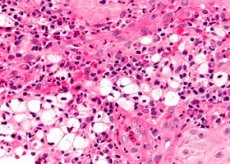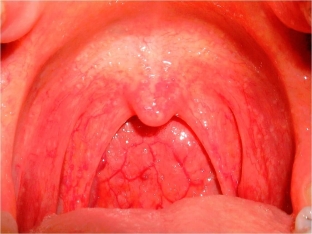Treatment of any pathology can be successful only after an accurate diagnosis. Diagnosis of scleroma at an early stage is very difficult due to non-specific symptoms. At the first suspicion of scleroma, taking a swab from the nasopharynx will help to identify the Frisch-Volkovich stick in its earliest stages. Early diagnosis greatly improves the course of the disease and prognosis after granuloma treatment.
What is the diagnostic program before starting treatment of granulomas in scleroma?
 When detecting specific rods in a bacteriological study, it is important to examine all parts of the respiratory system to identify possible lesions and effectively treat the granuloma. To do this, use rhinoscopy, endoscopic examination, bronchoscopy, laryngoscopy, microlaryngoscopy. Histological examination reveals specific Mikulich cells. It is important to know that in the stage of scarring, Frisch-Volkovich rods and Mikulich cells are no longer detected.
When detecting specific rods in a bacteriological study, it is important to examine all parts of the respiratory system to identify possible lesions and effectively treat the granuloma. To do this, use rhinoscopy, endoscopic examination, bronchoscopy, laryngoscopy, microlaryngoscopy. Histological examination reveals specific Mikulich cells. It is important to know that in the stage of scarring, Frisch-Volkovich rods and Mikulich cells are no longer detected.
In addition, X-ray of the pharynx and CT are performed to identify scattered lesions and ossification strips in the cicatricial stage. The paranasal sinuses, lungs and voice function are examined. If scleroma is suspected, the patient is referred for another consultation with a dentist, dermatologist and ophthalmologist.
Before starting treatment of granuloma, scleroma is differentiated from Wegener's granulomatosis, syphilis, tuberculosis, lymphoma, leprosy, and benign tumors of the nasal cavity and larynx.

What are the modern methods of treating granulomas in scleroma?
Treatment of granuloma in scleroma consists of etiotropic and anti-inflammatory therapy, bougienage of infiltrates and stenoses, restoration of airway patency. Embichin and streptomycin are used to eliminate the pathogen. Recently, local X-ray therapy has gained popularity, carried out at a distance of 30 cm, having a radiation dose of 100-200 r. The course of treatment is up to 20 sessions. X-ray therapy started in the early period of scleroma leads to complete resorption and effective treatment of granulomas and prevents irreversible scarring. The dystrophic form is well treated with alkaline and oil inhalations.
Palliative treatments for granulomas in scleroma include surgical treatment and bougienage. These methods are used for severe respiratory disorders. The purpose of surgery is the excision of granulomas and tissues with cicatricial changes. Emergency tracheostomy is performed in case of acute laryngeal stenosis.
Timely and competently performed treatment of granulomas in scleroma leads to a long-term remission or even complete recovery of the patient. But due to the difficulty in diagnosing scleroma, it is detected already in the active period, which significantly worsens the prognosis. In this case, the disease can last for many years and be widespread.
Thus, in the presence of long-term rhinitis, headache and fatigue, impaired sense of smell or crusting in the nasal cavity, these symptoms and complaints should not be ignored. Any symptoms speak of some kind of pathological process. Listen to your body and, if necessary, do not postpone a visit to the doctor.







Add a comment